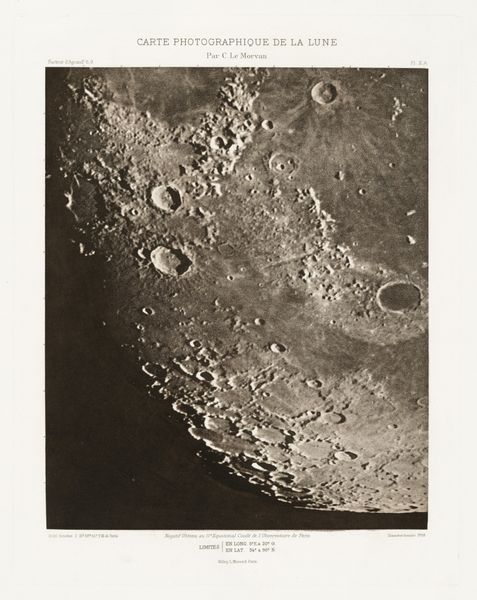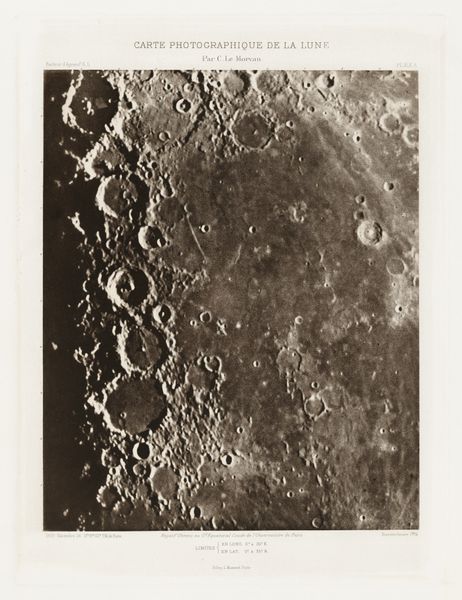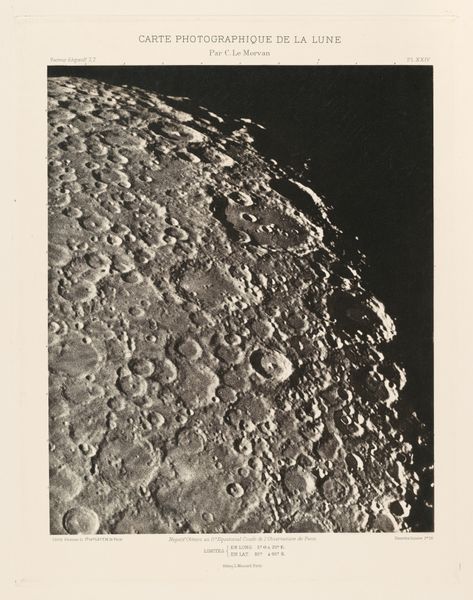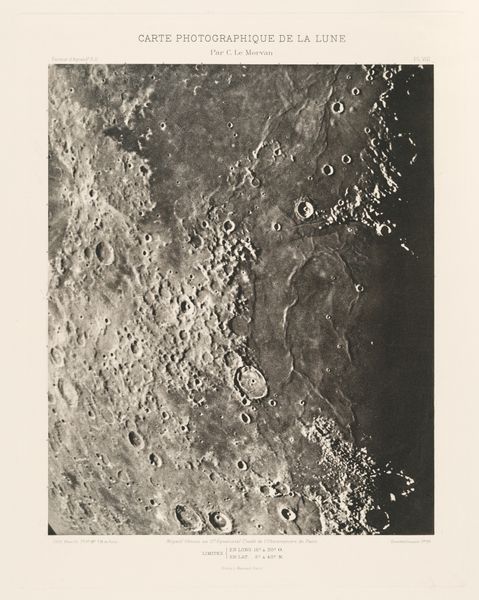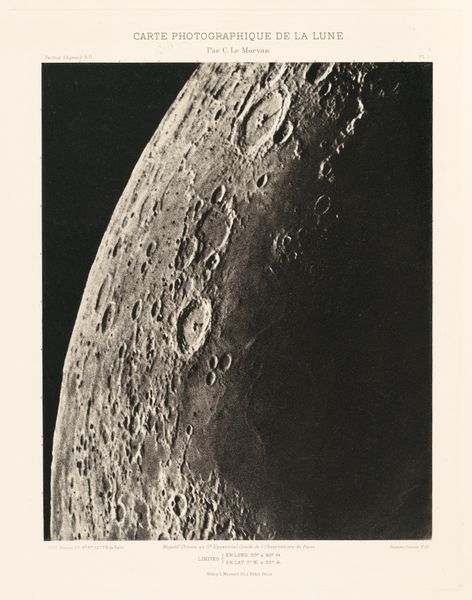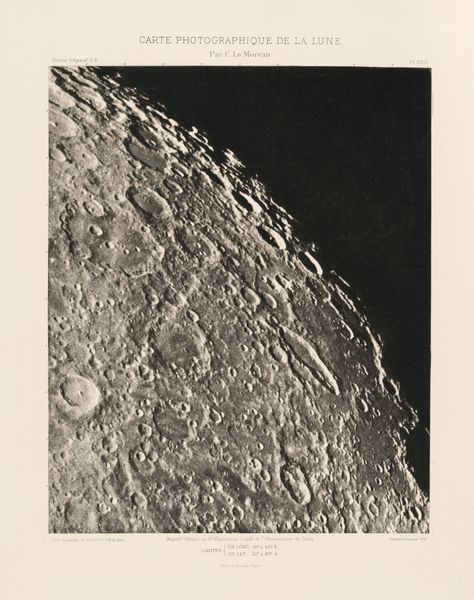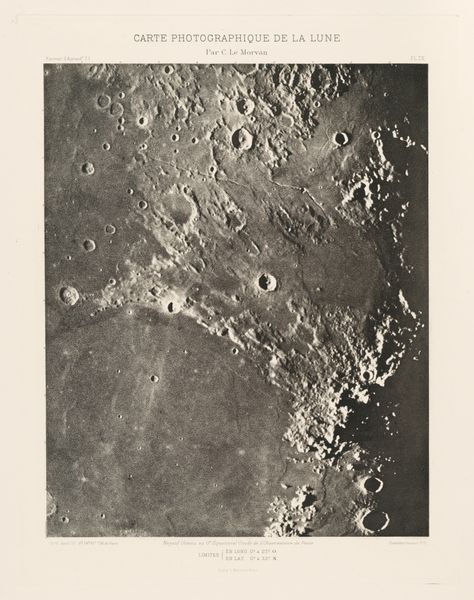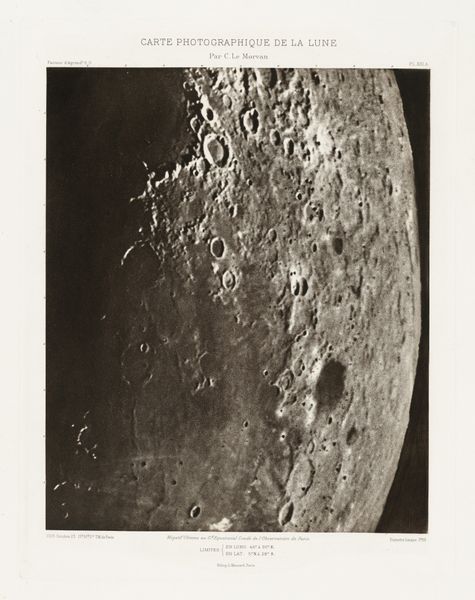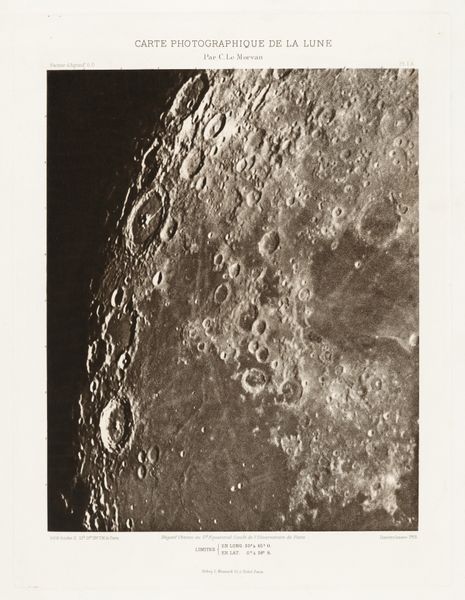
Carte photographique de la lune, planche XX.A (Photographic Chart of the Moon, plate XX.A) Possibly 1902 - 1914
0:00
0:00
print, photography, gelatin-silver-print
# print
#
photography
#
geometric
#
gelatin-silver-print
Dimensions: image: 31.1 × 25.5 cm (12 1/4 × 10 1/16 in.) plate: 38.9 × 29.5 cm (15 5/16 × 11 5/8 in.) sheet: 49 × 37.9 cm (19 5/16 × 14 15/16 in.)
Copyright: National Gallery of Art: CC0 1.0
Charles Le Morvan made this photographic chart of the moon sometime around the turn of the 20th century. During this period, new technologies, such as photography, were used by institutions to extend the reach of human vision and to catalogue and classify the natural world, as European nations continued their colonial expansion. This photograph of the moon comes to us from France, and it is important to understand that the French state played a key role in funding and promoting scientific research. Institutions such as the Paris Observatory enabled advancements in astronomical photography. These images of the moon might seem purely scientific, but they reflect the values and ambitions of the society that produced them, a society intent on conquering nature and expanding knowledge. To understand this image, research into the history of science, technology, and French colonialism would be invaluable. Only then can we appreciate the full social and institutional context that shaped its production.
Comments
No comments
Be the first to comment and join the conversation on the ultimate creative platform.



